Once your df is cleaned you will not have empty cells, they most likely will be filled with 'nan' or zeros.
Also in your picture you have an 'addition' error. If you add the numbers from the table the count will not match the count in that picture.
This will add a column at the end of your df that will contain a count:
import pandas as pd
df = pd.DataFrame({'size':[5,7,4,3,6], 'm1': [5,6, 0, 3, 0], 'm2': [4,6,4,0,0], 'm3': [3, 0, 2, 0, 0]})
df1 = pd.DataFrame({'size':[df['size'].sum()], 'm1':[df['m1'].sum()], 'm2':[df['m2'].sum()], 'm3':[df['m3'].sum()]})
df = pd.concat([df, df1], ignore_index=True)
old_index = df.index.to_list()
df.rename(index={old_index[-1]:'Sum'}, inplace=True)
print(df)
OUTPUT:
size m1 m2 m3
0 5 5 4 3
1 7 6 6 0
2 4 0 4 2
3 3 3 0 0
4 6 0 0 0
Sum 25 14 14 5
I did not reproduce your index as it was irrelevant.
I personally would put it in a different DF instead of creating a row, but that is a personal choice.
EDITED
I am kinda confuse if you want to calculate upto first or last non NaN value, so here is a few options.
if you want to calculate upto first non nan value then do this:
import pandas as pd
import numpy as np
df = pd.DataFrame({'size':[5,7,4,3,6], 'm1': [5,6, np.nan, 3, np.nan], 'm2': [4,6,4,np.nan,np.nan], 'm3': [3, np.nan, 2, np.nan, np.nan]})
df.dropna(inplace=True)
df1 = pd.DataFrame({'size':[df['size'].sum()], 'm1':[df['m1'].sum()], 'm2':[df['m2'].sum()], 'm3':[df['m3'].sum()]})
df = pd.concat([df, df1], ignore_index=True)
old_index = df.index.to_list()
df.rename(index={old_index[-1]:'Sum'}, inplace=True)
print(df)
OUTPUT:
size m1 m2 m3
0 5 5.0 4.0 3.0
Sum 5 5.0 4.0 3.0
That is assuming you cleaned data.
OR
If you want to keep all data but still count only up to first not non value:
import pandas as pd
import numpy as np
df = pd.DataFrame({'size':[5,7,4,3,6], 'm1': [5, 6, np.nan, 3, np.nan], 'm2': [4,6,4,np.nan,np.nan], 'm3': [3, np.nan, 2, np.nan, np.nan]})
df2 = df.copy()
df2.dropna(inplace=True)
df1 = pd.DataFrame({'size':[df2['size'].sum()], 'm1':[df2['m1'].sum()], 'm2':[df2['m2'].sum()], 'm3':[df2['m3'].sum()]})
df = pd.concat([df, df1], ignore_index=True)
old_index = df.index.to_list()
df.rename(index={old_index[-1]:'Sum'}, inplace=True)
print(df)
OUTPUT:
size m1 m2 m3
0 5 5.0 4.0 3.0
1 7 6.0 6.0 NaN
2 4 NaN 4.0 2.0
3 3 3.0 NaN NaN
4 6 NaN NaN NaN
Sum 5 5.0 4.0 3.0
Though I still don't get how you got your count.
